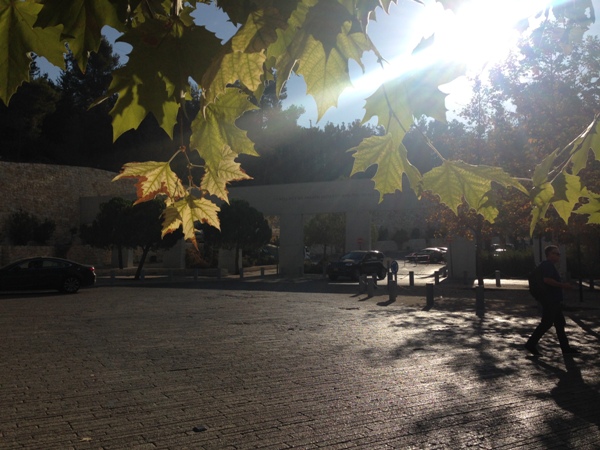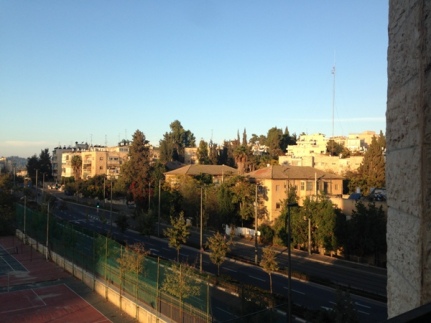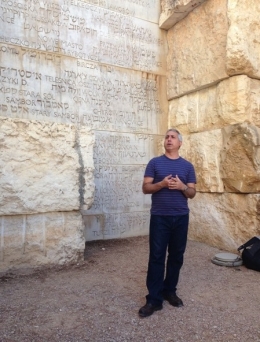
Street Art in the centre of Jerusalem
In Shoah and Genocide I wrote about Professor Yuhuda Bauer’s insights into why the Shoah or Holocaust was unprecedented. However, for any genocide to occur there has to be a history behind it. Dr Jesper Svartvik* suggests that however painful it might be we have to recognise the part that Christian anti-Semitism had to play in it. So what was the history of this anti-Semitism?
He suggests that this can be explained as a sevenfold process:
- SIBLINGS (Mark) In the beginning Judaism and Early Christianity had something in common. However, like most families where there are siblings, although they have a common origin that can be very different in character
- RIVALRY (Marcion) For more than 100 years, Christians had been using the Old Testament as Christian Scripture, and even the most sacred documents of Christians referred to and relied heavily on, the Old Testament. The solution for Marcion, a second century theologian, was to completely reject the Old Testament and establish a canon that de-emphasized Christianity’s Old Testament and Jewish roots as much as possible, to move from the LAW to GRACE. Although his solution was rejected it did cause the early Church Father to do some re-evaluation, after all they were reading it through Christian spectacles
- NECESSARY (Augustine) Despite speaking out against the Jews, he did not consider Judaism a problem, in fact he is quoted as saying that Jewish scripture was vital to the Christian faith, “If any adversary should say you have forged these prophecies, let the Jewish books be produced. They are our librarians.” But he did not consider the survival of Jews as necessary, after all they were the ones that had said ‘no’ to the Messiah and had therefore been relieved of God’s promises (replacement theology).
- OPPOSITE (Luther) Martin Luther believed that there is no valid way of being a Christian that will make you Jewish, it could be agreed that they had the right texts but they were doing the wrong thing with them. At first Luther wanted to convert the Jews to Christianity, it had been done before because Christ himself was a Jew, but when this failed he said ‘Away with them’. As he grew older this attitude became more and more polemic, using the rudest and vilest scatological language, perhaps the politest example being ‘throw sow dung at him . . . and chase him away’. The effect though of this is that defendants in the Nuremberg trials after the war were able to quote from his treatise, On the Jews and Their Lies, written in 1543, as justification

Martin Luther
5. UNNECESSARY (Enlightenment). You would have thought that the Age of Enlightenment in the Eighteenth century, with its metaphorical image of light, would mean that these differences would disappear. However, when you become a minority, marked by your religious symbols and customs, these are seen as making you more religious, rather than part of the establishment . Therefore, religious attachment becomes a problem.
6. POISON (Nazi Germany) Christianity remained the dominant religion in Germany through the Nazi period. That Nazi ideology was able to come to the fore was due in part to the social and economic situation between 1918 and 1933. However, the Nazi’s didn’t even consider Jews as human and started talking about them as ‘rats’, a natural pest to be destroyed. Using a Christian perspective it was considered that there could be no salvation without the defeat of the Jews. The commandment to ‘love your neighbours’ was interpreted as ‘they live next door to us, but they are not my neighbours’.
7. SACRAMENTUM (Nostra Aetate) The Nosta Aetate is the Declaration on the Relation of the Church with Non-Christian Religions of the Second Vatican Council and repudiated anti-Semitism and the charge that Jews were collectively guilty for the crucifixion of Jesus Christ. It said that we were all children of Abraham and that Christians and Jews were a blessing to the world. It also drew on Romans 11, the fact that ‘they are our brothers’.
This seems to bring the seven points in full circle – from Siblings to Sacramentum because Early Christianity and Judaism were so similar, but that Christianity had stepped out of the ashes of the 2nd Temple’s destruction. Christianity being the word that became flesh whilst Judaism was the flesh that became Word.


Dr Jesper Svartvik since 2009 is the holder of Krister Stendahl’s professor of religious theology at the Center for Theology and Religious Studies at Lund University and the Swedish Theological Institute in Jerusalem. Between 2005 and 2009, he was chairman of the Swedish Committee against Anti-Semitism










